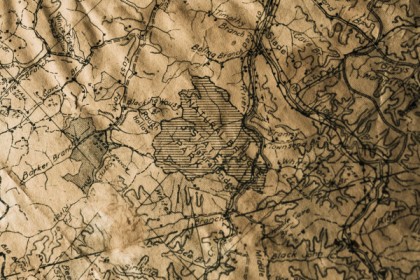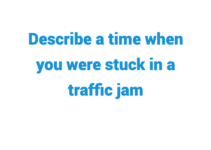Table of Contents
Describe An Occasion when You Used a Map (e.g a Paper Map, An Electronic Map) That Was Useful

Cue Card
You should say:
- When and where you used the map
- What it was like
- How useful it was
- Why you used it
- And explain how you felt about the experience
Sample Answer 1
Last November, I had the pleasure of visiting Shanghai Disneyland, a truly magical place bustling with excitement and adventures. To make the most of my one-day visit, I relied heavily on an electronic map available through the official Shanghai Disneyland app. This digital map was not just a basic layout of the park, but a comprehensive guide to everything I could imagine needing.
What made this map exceptionally useful was its real-time updates. It showed where I could find food, the locations of parades and performances, and even the waiting times for each ride. This level of detail was instrumental in planning my day efficiently. For example, when I saw that the waiting time for the Pirates of the Caribbean ride was just 15 minutes, I hurried over and enjoyed the ride with minimal wait.
The map was more than a tool; it was like a personal guide, helping me navigate through the sprawling park with ease. I could find the quickest routes to my next destination, which saved me a lot of time and effort. This efficiency allowed me to experience more attractions than I initially thought possible.
Reflecting on this experience, I felt an overwhelming sense of satisfaction. The map not only helped me navigate through the park but also enriched my visit by allowing me to experience much more than I would have otherwise. I believe such electronic maps are a boon to visitors, especially in vast amusement parks like Shanghai Disneyland. Their efficiency and user-friendliness can significantly elevate the visitor experience.
Sample Answer 2
I would like to share an experience from a road trip I took a couple of years ago when I had to rely on a paper map. It was during a vacation in a rural area where GPS signals were unreliable.
We were exploring a remote mountainous region, and as we ventured deeper into the area, the GPS on our smartphones started losing signal strength. Eventually, we found ourselves in an unfamiliar place with no electronic navigation available.
With no other option, we pulled out an old-fashioned paper map we had picked up from a local tourist information center. The map provided a detailed layout of the region, including key landmarks, roads, and topographical features.
Using the paper map, we were able to navigate our way through the winding roads and reach our destination successfully. It was a unique experience, and although it required more effort and attention than using a GPS, it added an adventurous element to the journey.
I felt a mix of nostalgia and a sense of accomplishment from successfully relying on a traditional paper map. It made me appreciate the convenience of modern technology while also recognizing the reliability and charm of more traditional navigation methods. Overall, the experience of using a paper map added an unexpected and memorable dimension to our road trip.
Part 3
1. What do people usually do when they get lost?
When people find themselves lost, especially in urban areas, their first instinct is often to consult electronic navigation tools. Nowadays, with the widespread availability of smartphones, accessing GPS-based apps like Google Maps or Apple Maps is a common solution. These apps provide real-time directions and are particularly useful in unfamiliar settings. However, if the situation arises in remote or rural areas, where signal might be weak or non-existent, the scenario changes. Here, a person’s knowledge of geography and survival skills can become crucial.
Additionally, asking locals for directions is another common approach in towns and cities. This not only helps in finding the way but can also lead to interactions with residents, offering a more personal touch to the experience.
In contrast, in the wilderness, relying on traditional methods like using a compass or reading physical maps becomes more relevant.
2. What are the differences between paper and digital maps?
Paper and digital maps serve the same fundamental purpose – to guide and inform – but they differ significantly in their features and usability. Paper maps, being non-interactive, offer a static view of the area. They don’t provide real-time updates or location tracking, which can be a limitation in dynamic or unfamiliar environments. However, paper maps sometimes hold a certain nostalgic and collectible value, appealing to enthusicsts and collectors.
On the other hand, digital maps, which are readily accessible on smartphones and other devices, are highly convenient. They offer interactive features such as real-time traffic updates, route optimization, and even location-based recommendations. This interactivity and convenience are what make digital maps particularly popular in today’s fast-paced world.
3. What do you think of in-car GPS navigation systems?
In-car GPS navigation systems have revolutionized the way we travel. They have become indispensable tools for drivers, significantly simplifying the process of navigating to new or unfamiliar destinations.
I find it hard to imagine how people managed long-distance travel before the advent of these systems. The convenience they offer is unparalleled – with features like voice guidance, real-time traffic updates, and alternate route suggestions, they make driving a much less daunting task. These systems have not only made traveling more efficient but have also contributed to safer driving by reducing the need to consult physical maps while on the move. Moreover, the integration of these systems into modern vehicles shows how technology is continuously shaping and improving our everyday experiences.
4. What do people often do with a map?
Maps are versatile tools used for various Purposes. Primarily, people use maps to navigate unfamiliar areas. They help in plotting routes and identifying the best paths to a destination.
Beyond simple navigation, maps are also invaluable for locating amenities like restaurants, which is particularly useful for travelers in new cities. Moreover, maps can be essential in finding public utilities such as restrooms, especially in densely populated urban areas or tourist spots.
For hikers and outdoor enthusiasts, maps serve as a guide in natural landscapes, showing trails and significant natural landmarks. In a broader sense, maps help people gain a spatial understanding of a place, allowing them to appreciate the layout and distances between different locations. They also serve as educational tools, providing insights into the geography of a region.
5. Why do most people prefer to use a paper map?
Many people prefer paper maps, particularly in situations where technology might not be reliable.
In remote areas or during wilderness adventures, where cell phone reception is often limited or non-existent, a paper map becomes an essential tool for navigation. Paper maps are reliable as they don’t rely on battery power or network, connectivity. They are particularly favored by outdoor enthusiasts who venture into areas where digital devices might fail. Moreover, paper maps provide a broader, uninterrupted view of the area, which can be helpful in planning routes. They also have a tactile and visual appeal that digital maps lack.
Furthermore, for those who are not as tech-savvy or prefer traditional methods, paper maps offer a familiar and straightforward way to navigate.
6. How does learning to read a map help you learn more about your country?
Learning to read a map can significantly enhance one’s understanding of their country. It helps in developing a sense of geography, including the locations of major cities, rivers, mountain ranges, and other geographical features. This knowledge fosters a deeper connection to the country, as individuals gain insight into how cities are interconnected and how landscapes shape the nation.
Additionally, map reading can reveal historical and cultural information. By understanding the layout of historical sites or cultural landmarks, one can appreciate their country’s history and heritage more profoundly.
Maps also educate about the country’s infrastructure, like roads and railways, which reflects economic and developmental aspects.
Furthermore, understanding the environmental features through maps raises awareness about ecological diversity and conservation needs. In essence, map reading is a gateway to a comprehensive understanding of a country’s physical, cultural, and historical identity.
Some IELTS Speaking part 2 cue-cards you may like :
- IELTS Speaking Part 1 From January to April 2024
- IELTS Speaking Part 2 From January to April 2024
- (2024) Describe An Occasion When you Heard Someone Complaining About Something In a Restaurant/ Store Or Other Business Places
- (2024) Describe a Uniform You Wear (e.g. at School, at Work)
- (2024) Describe An Outdoor Activity You Did
- (2024) Describe a Useful Skill That You Learned As a Teenager
Credits
Image : Photo by Nik Shuliahin on Unsplash


